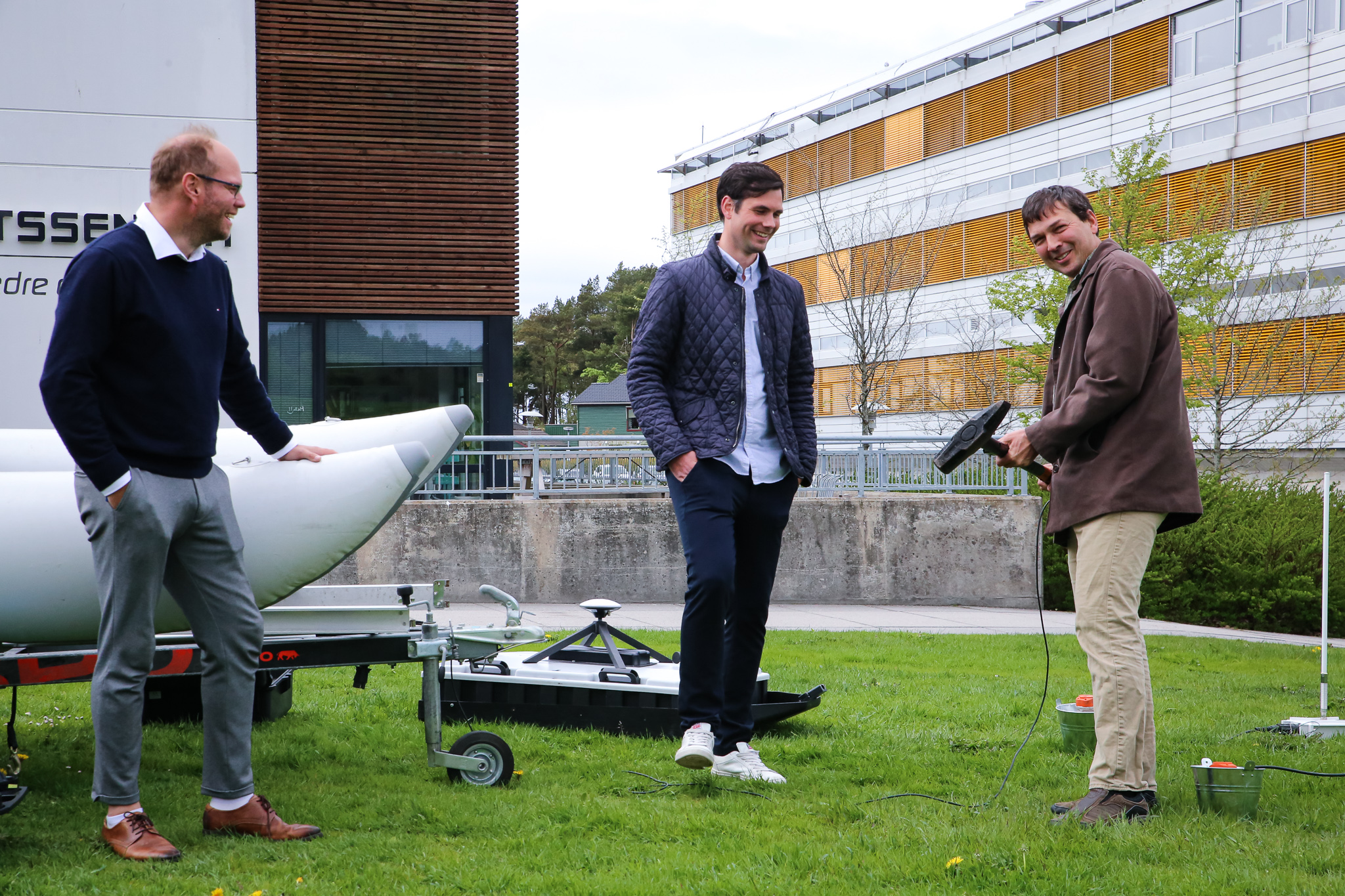The Department of Energy Resources at University of Stavanger is investing in new equipment and new research areas within geotechnics and geophysics, in collaboration with Anko. This gives our students the opportunity to learn subjects and techniques that can also be used outside the petroleum industry.

Geosciences are traditionally associated with the resources in the bedrock, geology and petroleum exploration & production. The university is now investing in new equipment and new research areas within geotechnics and geophysics in collaboration with industry partner Anko, which, among other things, is engaged in geomatics and land surveying. The aim is to give students opportunities to learn subjects and techniques that can also be used outside the petroleum industry.
The collaboration agreement between the Department of Energy Resources and Anko was signed earlier in May. Over a three-year period, the department receives NOK 1 million a year to conduct research and innovation in geotechnics and geophysics.
"The agreement gives us the opportunity to create a new course in geotechnics in the bachelor program geo- and energy resources. Students are given the opportunity to use data from the projects. In addition, the collaboration will open up for more research projects for our PhD students," says head of department Alejandro Escalona.
Knowledge transfer
The goal of the collaboration for Anko is to further develop land-based industry by developing smart solutions that benefit from experience from the petroleum industry. The researchers at UiS use oil industry processing technology tailored for onshore and offshore, near surface geophysics.
"With this agreement we will have an invaluable access to master's and PhD students. The market both in the region and internationally is in great development. The expertise built up at UiS in close collaboration with the petroleum industry has led to a number of innovations and new technology, says general manager Stian Lomeland in Anko.
The company wants to use this expertise towards the construction industry to find smarter ways of working, which will be more accurate and cost-effective compared to current methods.
"From UiS we get dedicated personnel who facilitate that we can be at the forefront of this development. We believe that together we can revolutionize parts of our field of expertise," says Lomeland.
Geotechnical challenges in the region
Research and education in geotechnics and surface geophysics is new at UiS, and also in Rogaland. One of the tasks is to provide the fundamentals of a new application within geosciences and engineering that can provide more job opportunities for students.
"With this collaboration agreement, our geoscience students can aim at areas outside the petroleum industry. They can work with geotechnical challenges due to weather changes, such as drainage, floods and landslides. The competence is also useful in fields such as archeology and mapping of the bedrock. Through the agreement, we can educate geoscience students with relevant competence in close collaboration with industry," says Alejandro Escalona.
The collaborative project uses equipment such as drones, lidar (optical remote sensing technology) and an autonomous catamaran developed at UiS to efficiently collect, process and interpret 2D- and 3D-geophysical data. Besides the equipment development and testing, the collaboration also gives research possibilities towards better utilization of the data through processing, including machine learning and full waveform inversion applications to near surface land and shallow water areas.